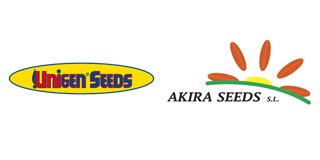
UNIGEN SEEDS SPAIN
Review about the chitosan, a versatile antimicrobial polysaccharide for fruit and vegetables in postharvest
Chitosan has been proven to control numerous postharvest diseases in various horticultural commodities; in addition, its action mechanisms are well documented. To date, in a multifaceted approach, the integration of chitosan with other alternatives, including, among others, physical and chemical options to reduce the incidence of diseases during storage, has been proven in various fruit and vegetables. As of today, control of postharvest pathogenic microorganisms by applying chitosan nanomaterials remains an emerging technology. Despite that, overall results indicate that the integration of chitosan with other control methods extend the storage life of numerous important horticultural commodities largely by reducing microorganism incidence. The objective
18 September, 2017
Chitosan has been proven to control numerous postharvest diseases in various horticultural commodities; in addition, its action mechanisms are well documented. To date, in a multifaceted approach, the integration of chitosan with other alternatives, including, among others, physical and chemical options to reduce the incidence of diseases during storage, has been proven in various fruit and vegetables.? As of today, control of postharvest pathogenic microorganisms by applying chitosan nanomaterials remains an emerging technology. Despite that, overall results indicate that the integration of chitosan with other control methods extend the storage life of numerous important horticultural commodities largely by reducing microorganism incidence. The objective of this article was to gather, analyze and summarize relevant published information about the inclusion of chitosan with other preservation methods including heat, UV irradiation, modified atmosphere packaging (MAP), plant derivatives, inorganic acids, salts, antagonistic microorganisms, fungicides and other coatings. Recent advances in the evaluation of chitosan-based nanomaterials were also reviewed. In spite of its demonstrated positive effects, assays about its application to large-scale tests and its integration into postharvest commercial practices are still lacking. SourcesChitosan: a versatile antimicrobial polysaccharide for fruit and vegetables in postharvest ? a reviewSilvia Bautista-Ba?os*; Rosa Isela Ventura-Aguilar; Zormy Correa-Pacheco; Mar?a Luisa Corona-Rangel (2017)Instituto Polit?cnico Nacional, Centro de Desarrollo de Productos Bi?ticos. Carretera Yautepec?Jojutla km 6. CEPROBI 8, San Isidro Yautepec, Morelos, C. P. 62730. M?XICO.http://dx.doi.org/10.5154/r.rchsh.2016.11.030Revista Chapingo Serie Horticultura 23(2), 103-121. 2017www.chapingo.mx/revistas/horticultura Picture, screen of a search in Terralia?(products based on chitosan available in Spain)??









